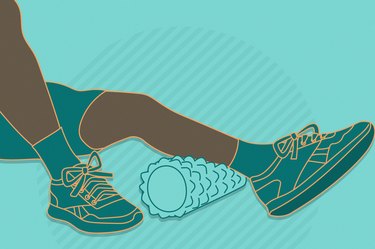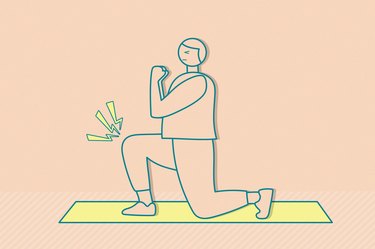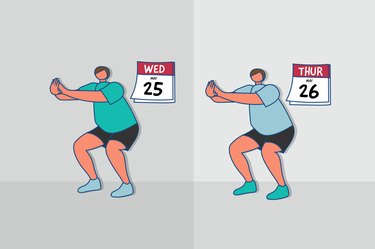
Nowadays, foam rollers are a ubiquitous part of nearly every gym and cooldown recommendation. And you can find them in each and every size and material, including foam, plastic and PVC.
Although foam rollers are easy to find (or buy online), they're equally as easy to ignore. Just like you may breeze past your warm-up or cooldown routine, spending an extra 15 minutes foam rolling each day can feel like a chore. Plus, if you're a little sore, it may even be painful.
Video of the Day
Video of the Day
If you don't love to foam roll, you may be relieved to hear that's not an absolute must when it comes to working out. But, foam rolling every so often does make a noticeable difference in your body and workouts. Learn how bad it really is to never foam roll.
Foam Rollers We Love
- TriggerPoint GRID Foam Roller ($36.95, Amazon.com)
- LuxFit Speckled Foam Roller ($30.13, Amazon.com)
- Brazyn Morph Foam Roller ($69.95, Amazon.com)
What Happens When You Foam Roll?
Foam rolling is a form of self-massage that comes with a variety of benefits for both athletes and occasional gym-goers. When you foam roll, the pressure of the roller against your body helps encourage your muscles to stretch and realign, releasing tense knots, according to the National Academy of Sports Medicine (NASM).
Stretching and loosening tight muscles can help promote faster recovery, reduced soreness and a better range of motion, according to the NASM. Plus, regular foam rolling can prevent achy muscles, leaving you refreshed for your next workout, according to Noam Tamir, CSCS, CEO and founder of TS Fitness in New York City.
"It's also mentally relaxing to foam roll after your workout," Tamir tells LIVESTRONG.com. You can even use foam rolling as part of your warm-up routine to increase blood flow to the muscles you plan to train, he says.
Related Reading
Is Foam Rolling a Must?
Is foam rolling an absolute must? Not necessarily, according to Winnie Yu, DPT, CPT, a New York–based physical therapist at Bespoke Treatments. But that doesn't mean you should let your foam rolling routine fall by the wayside.
"At the end of the day, if you skip foam rolling after a workout, the body is ultimately still able to recover and flush out the areas that were involved in the workout on its own — foam rolling just serves as an adjunct to this process," she tells LIVESTRONG.com.
How often do you really need to foam roll to experience the many benefits of foam rolling? There's no golden rule, according to Yu. But if you have a more sedentary job or participate in a lot of exercise and physical activity, you should carve out more time to foam roll.
"Even if you aren't working out that day, you can still benefit from including a few minutes of foam rolling into your morning routine to feel better throughout the day," she says.
Related Reading
So, How Bad Is It Really to Never Foam Roll?
Never foam rolling isn't necessarily bad, per se, but you miss out on a ton of benefits, according to Tamir and Yu. Foam rolling a few times a week can help improve your recovery rate, flexibility and range of motion. Plus, it's just a relaxing practice! (Find out the rest of the foam-rolling perks you're missing out on — there are a ton! — here.)
Was this article helpful?
150 Characters Max
0/150
Thank you for sharing!
Thank you for your feedback!



